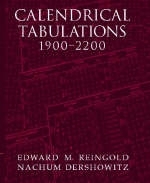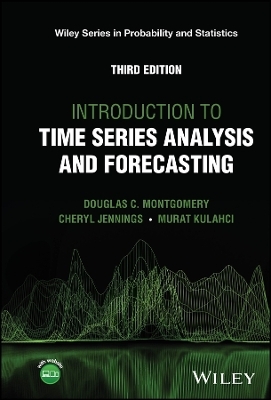
Calendrical Tabulations, 1900–2200
Seiten
2002
Cambridge University Press (Verlag)
978-0-521-78253-1 (ISBN)
Cambridge University Press (Verlag)
978-0-521-78253-1 (ISBN)
Simultaneously displays the date on thirteen different calendars over a three-hundred year period.
The momentous task of assembling such a comprehensive and accurate collection of calendars could only have been achieved by the authors of the definitive text on calendar algorithms, Calendrical Calculations. Using the algorithms outlined in their earlier book, Professors Reingold and Dershowitz have achieved the near-impossible task of simultaneously displaying the date on thirteen different calendars over a three-hundred year period. Represented here are the Gregorian, ISO, Hebrew, Chinese, Coptic, Ethiopic, Persian, Hindu lunar, Hindu solar, and Islamic calendars; another three are easily obtained from the tables with minimal arithmetic ( J.D., R.D. and Julian). The tables also include phases of the moon, dates of solstices and equinoxes, and religious and other special holidays for all the calendars shown. Why produce a book of tables in the computer age? Because computer programs can cover only one or two calendars, have a limited range, are of dubious accuracy, are difficult for a non-expert to use, or work only on a small subset of computers. This set of beautifully-produced tables will be of use for centuries by anyone with an interest in calendars and the societies that produce them. It should also prove an invaluable reference tool for astronomers and genealogists.
The momentous task of assembling such a comprehensive and accurate collection of calendars could only have been achieved by the authors of the definitive text on calendar algorithms, Calendrical Calculations. Using the algorithms outlined in their earlier book, Professors Reingold and Dershowitz have achieved the near-impossible task of simultaneously displaying the date on thirteen different calendars over a three-hundred year period. Represented here are the Gregorian, ISO, Hebrew, Chinese, Coptic, Ethiopic, Persian, Hindu lunar, Hindu solar, and Islamic calendars; another three are easily obtained from the tables with minimal arithmetic ( J.D., R.D. and Julian). The tables also include phases of the moon, dates of solstices and equinoxes, and religious and other special holidays for all the calendars shown. Why produce a book of tables in the computer age? Because computer programs can cover only one or two calendars, have a limited range, are of dubious accuracy, are difficult for a non-expert to use, or work only on a small subset of computers. This set of beautifully-produced tables will be of use for centuries by anyone with an interest in calendars and the societies that produce them. It should also prove an invaluable reference tool for astronomers and genealogists.
Preface; Reading the tables; Summary of warnings; Acknowledgments; References; Calendars, 1900–2200.
| Erscheint lt. Verlag | 16.9.2002 |
|---|---|
| Zusatzinfo | 300 Tables, unspecified |
| Verlagsort | Cambridge |
| Sprache | englisch |
| Maße | 224 x 284 mm |
| Gewicht | 1996 g |
| Themenwelt | Geschichte ► Hilfswissenschaften ► Chronologie |
| Informatik ► Theorie / Studium ► Algorithmen | |
| Naturwissenschaften ► Physik / Astronomie ► Astronomie / Astrophysik | |
| ISBN-10 | 0-521-78253-8 / 0521782538 |
| ISBN-13 | 978-0-521-78253-1 / 9780521782531 |
| Zustand | Neuware |
| Haben Sie eine Frage zum Produkt? |
Mehr entdecken
aus dem Bereich
aus dem Bereich
Buch | Hardcover (2024)
John Wiley & Sons Inc (Verlag)
139,95 €


